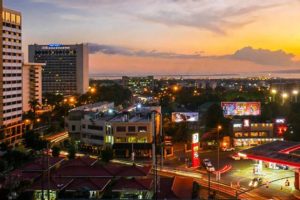July 09, 2025
Barbados is set to become the first nation to use a new standardised debt swap facility designed to help countries redirect funds from high-interest loan payments to development projects, finance officials told Reuters.
Dubbed a “debt-for-resilience” facility, the multi-billion dollar program is backed by four major development banks. It is expected that two or three more countries in the Caribbean region, where the initiative is focused, will sign up by the end of the year.
Barbados is on course to be the test case later this year, with the facility’s formal launch planned for the U.N. COP30 climate summit in Brazil in November, according to Finance Minister Ryan Straughn.
“Barbados will focus initially on a debt-for-social swap to create fiscal space to renew investment in our social sector,” Straughn said, without providing details on the targeted projects.
He noted that several other Caribbean countries had also agreed in principle to undertake their own swaps, though he did not name them.
Under the programme, countries would buy back pockets of their most expensive government bonds from the open market. They would then cancel these bonds and issue new ones at significantly lower interest rates, thanks to credit guarantees from development banks that reduce the risk for bond buyers.
Debt swaps have become increasingly popular in recent years as a way for developing countries to replace costly government debt with cheaper bonds and use the savings on projects such as environmental conservation, schools, or infrastructure.
The new debt-for-resilience mechanism represents an advance by largely standardising many of the legal and transactional complexities that have caused some past swaps to take years to complete and yield relatively modest savings.
Barbados will need to specify its planned spending in advance, but the resilience designation provides wide flexibility regarding the types of projects it can pursue.
Blueprint for Other Regions
The four multilateral development banks involved are the Inter-American Development Bank, the World Bank, CAF, and the Caribbean Development Bank.
Well over a dozen countries in and around the Caribbean will be eligible to use the facility, although their national debt levels must be deemed broadly sustainable.
Avinash Persaud, special adviser at the Inter-American Development Bank, estimated that the initial wave of swaps under the facility could total between $2 billion and $3 billion over the coming years.
According to Persaud, projects that could be funded may range across physical, financial, fiscal, and social needs, offering governments options such as improvements in schools, health systems, financial systems, energy grids, or sea and border defences.
The hope is that the facility will also serve as a blueprint for countries in the Amazon basin and other regions around the world.
“Resilience is a key foundation for growth and development,” Persaud said. He added that individual swap sizes will depend on the countries and projects involved, pointing to debt-for-nature swaps in Ecuador and El Salvador that each surpassed the $1 billion mark.
IDB officials are scheduled to visit Barbados this month to evaluate potential projects for the inaugural swap.
This new swap is expected to be larger than the nearly $300 million deal in December that funded a new sewage treatment plant. That previous swap saved $125 million in interest payments, but officials have not yet confirmed the exact size of the upcoming transaction.
Sebastian Espinosa, managing director at White Oak Advisory, who has been working with the multilateral lenders and CARICOM (a grouping of 15 Caribbean states and five associate members) on the facility, said the overall focus on resilience is essential.
“It now comes down to what countries see as most important to them,” Espinosa said. “Importantly, it shows that debt swaps can be scaled up on both the sovereign side and the credit enhancement provider side.”
Source: (Reuters)
Disclaimer:
Analyst Certification -The views expressed in this research report accurately reflect the personal views of Mayberry Investments Limited Research Department about those issuer(s) or securities as at the date of this report. Each research analyst (s) also certify that no part of their compensation was, is, or will be, directly or indirectly, related to the specific recommendation(s) or view(s) expressed by that research analyst in this research report.
Company Disclosure -The information contained herein has been obtained from sources believed to be reliable, however its accuracy and completeness cannot be guaranteed. You are hereby notified that any disclosure, copying, distribution or taking any action in reliance on the contents of this information is strictly prohibited and may be unlawful. Mayberry may effect transactions or have positions in securities mentioned herein. In addition, employees of Mayberry may have positions and effect transactions in the securities mentioned herein.



